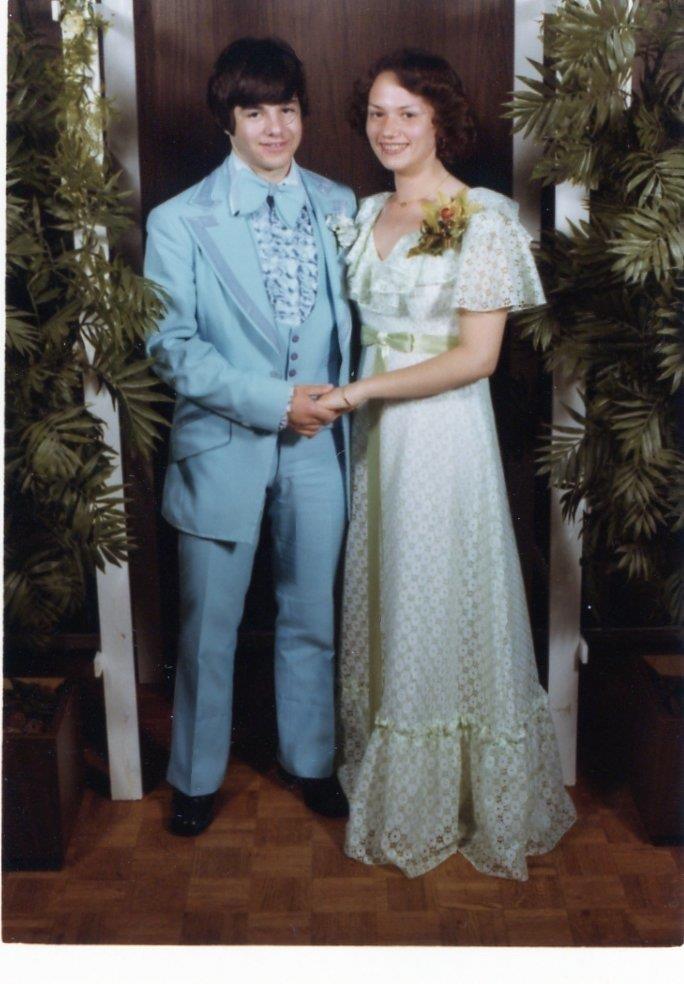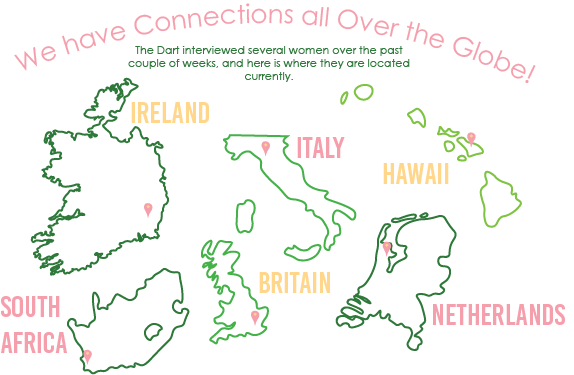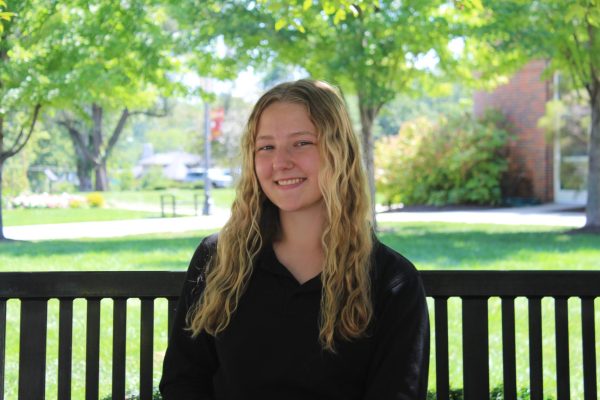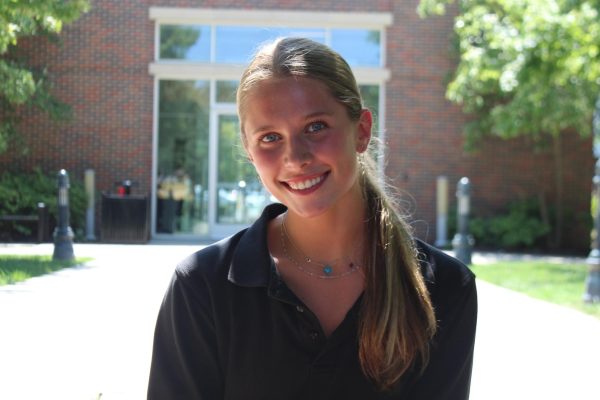It used to be simple. Girl meets boy. They go out to dinner. Introduce each other to their parents. Get married, start a family, live happily ever after. Nowadays, however, things are just a tad more complicated.
Mary Ann Cappo (Cartella, ‘78) and her husband of 42 years are the epitome of a classic love story.
“I was a sophomore at St. Teresa’s, and my now-husband was a sophomore at Rockhurst,” Cappo said. “We met at one of my friend’s 16th birthday parties.”
From there, the couple began to see each other among friends.
“We would kind of hang out in groups,” Cappo said. “He had a friend group. I had a friend group…There would be people who were dating and other people who were singles…we would just hang out.”
In May of 1976, Cappo’s now-husband called her to set up their first official date: the Rockhurst carnival. After attending Rockhurst homecoming together the following October, the pair solidified their relationship.
They remained together throughout college, despite attending different universities, and married in 1982, at the age of 22. Cappo claims an understanding of shared life priorities helped define their relationship.
“It wasn’t anything that we really said,” Cappo said. “We both knew that we wanted to get married [and] have children.”
Cappo’s high school love story isn’t completely unique: six other Rockhurst-STA couples in her class went on to get married. She discussed how high-school sweethearts have become less common.
“If our kids were dating somebody and brought [them] home, in our world, that could be a potential spouse,” Cappo said. “Of course, that didn’t happen [for] our kids. [Our] two boys were in their 30s when they got married.”
Cappo also commented on modern communication in dating.
“Nobody likes to talk on the phone,” Cappo said. “Everybody likes to email and text…I think that kind of communication is great for the early stages…but there’s no substitute for being in person. You can know some things about people, but you can’t know everything unless you spend time with them in person.”
Mary Beth Andersson (Rice, ‘83) has a much more unconventional tale. Her love story is straight out of a rom-com, and features a dash of familial interference. Andersson met her Swedish husband on a two-week European trip with the Kansas City Symphony Chorus: he was her bus tour guide.
Then-29-year-old Andersson had taken the trip with her grandmother and mother. The group visited Neuschwanstein Castle, but it began to rain on the walk up.
“[He] took his rain jacket off and gave it to my grandmother,” Andersson said. “She [was] like, ‘Oh, I like that.’”
Later that evening, Andersson wanted to go out in Munich, and her grandmother had a suggestion.
“She goes, ‘Go find that tour guide,’” Andersson said. “’Here’s his jacket. That’ll be your excuse.’”
Andersson went to find him, but found his room vacant, and returned to her own.
“About a minute later, there’s a knock on the door,” Andersson said. “It’s him. He’s looking for his jacket. [He was] going to the Hofbrauhaus, which is the famous beer garden. I said, ‘Can I go with you?’ He said, ‘Sure.’ So we did.”
Because her now-husband traveled often, Andersson didn’t have a traditional dating experience. The early days of her relationship were characterized by seeing him for short periods of time before he had to return to Europe. They stayed in touch through long-distance calls and writing letters. The couple quickly became serious and were married in November of 1996, 16 months after they met. Andersson attributes their commitment to clarity in expectations.
“We were very mature, I guess,” Andersson said. “We kind of knew what we wanted and knew how to communicate…We had dated and so we knew this [was] a good partner…We knew it was real and we had to make a decision.”
Andersson perceives modern dating practices to have both advantages and disadvantages.
“I think it’s a lot harder,” Andersson said. “I just feel like there’s a lot more stressors in the world today.…I guess there are ways to meet people that are easier…There are dating apps and we didn’t have anything like that. You just had to meet someone.”
She claims being introduced through a common acquaintance was the norm during her dating years.
“The people I dated [I met] because somebody introduced me to them,” Andersson said. “Then you just [went] out to eat or [went] to a bar, something like that.”
Gillen Tumminia (Gray, 2015) and her husband did meet through common acquaintances, but not in a bar: they were only 14. The pair has been together for ten years and married for the past two.
“We met each other in grade school through mutual friends and were friends on AIM and Facebook,” Tumminia said. “Once we got to high school, (Carter went to Rockhurst and I went to St. Teresa’s), our groups of friends would hang out a lot on the weekends.”
Tumminia notes that it took some time before they started dating.
“We talked for a few months,” Tumminia said. “We saw each other and texted often, but we were pretty shy toward each other for a while. We started ‘officially’ dating in February of 2012, but didn’t actually start hanging out without our other friends for months after that.”
Even though they started dating their freshman year, they did not do many “couple” things until almost two years after.
“We didn’t start going on real ‘dates’ together until probably sophomore or junior year,” Tumminia said.
Tumminia attended the University of Kansas, while her husband attended the University of Central Missouri, so they travelled back and forth from Warrensburg to Lawrence throughout college. During this time, technology and social media became much more prevalent in the world.
“Facebook was our biggest social media platform when we first started dating, and we actually first started talking by chatting on Facebook,” Tumminia said. “Instagram and Snapchat were brand new at the time. Facetime was also new but Carter didn’t have an iPhone until senior year of high school, so we didn’t really use that until college.”
Current STA senior Janie Gacek claims today’s high school relationships similarly feature technology. She thinks the use of technology in dating has upsides, but also challenges.
“Dating now I feel requires a lot more communication, because there’s a lot more going on now with online and everything,” Gacek said. “A lot of stuff gets miscommunicated…Just so much is perceived differently online through pictures; rumors are so much more easily spread…Because there’s more opportunity for communication, you almost have to work that much harder to make sure you get the right kind of communication.”
Because of these dangers, Gacek thinks it is important to be able to have conversations face-to-face.
“You need to communicate outside of texting, too, because often tone isn’t perceived well over text,” Gacek said. “So just having the maturity to be like, ‘Hey, we should talk about this in person.’”
Gacek’s own relationship began in-person; she and her boyfriend began dating after being part of the same friend group.
“We were friends before we started dating,” Gacek said. “We started to like each other probably for a month before we actually started talking. Then I think we talked for two months, then we started dating.”
Though Gacek and her boyfriend see each other often in a group setting, she thinks it is still important to spent time one-on-one to establish a reliable foundation.
“Making sure there’s quality time for you guys, even though there’s a lot going on,” Gacek said. “Obviously there’s the basis of trust…Someone could always be doing anything and you can choose to freak out about it or you can just trust.”
In order to create more confidence entering a relationship, many high-school students participate in “the talking stage,” which consists of having conversations, usually via Snapchat, with a person before officially dating them. Many students consider the talking stage to be an established step in the formation of a relationship.
“I feel like it goes: hanging out in a group setting, and then if you’re having fun in the group setting, maybe like, ‘Hey, do you want to come over or something?’” Gacek said. “People usually develop feelings through hanging out, so then it turns into talking. Talking stages now go on for so long because people I feel like are scared. Then, dating.”
Gacek notes that a lot of people who are talking, however, never get to the dating part.
“I feel like it’s rare for people to make it out of the talking stage because people spend too long talking and it just fizzles out,” Gacek said.
A struggle to define relationships is common for many students: Gacek recommends couples have conversations to get on the same page.
“It’s so confusing to be like, ‘Oh, so are we dating?’” Gacek said. “I feel like so many people use that [as an] excuse to start a conversation…We just laid out what dating means to each other…I was like, ‘Well, do you want it? Are you ready to commit to me?’ And he [was] like, ‘Yeah.’”
Gacek offered parting advice for students engaging in high school relationships.
“Just communicate with each other,” Gacek said. “There’s no reason to hold on to a grudge. I feel like people get bored and look for the drama…but if something’s wrong, just tell them, because oftentimes it will blow up into a bigger deal than it needs to be.”
Whether it be high school sweethearts or an international relationship turned successful marriage, there are many different ways to find love. Through any relationship, however, some qualities stand the test of time: trust, communication, common priorities and commitment.







